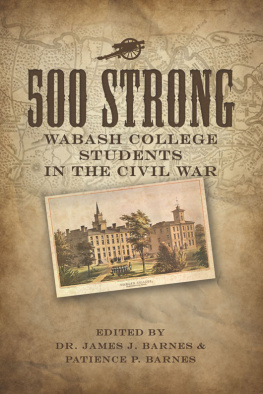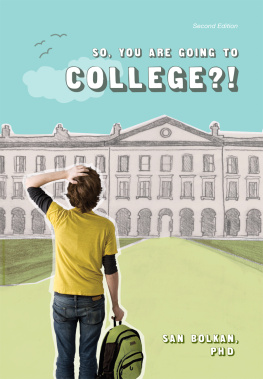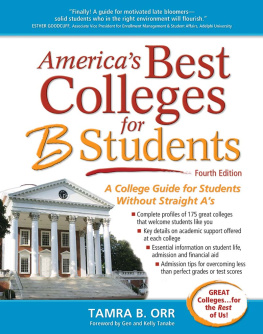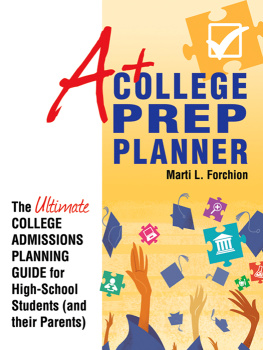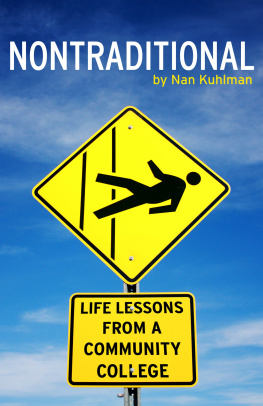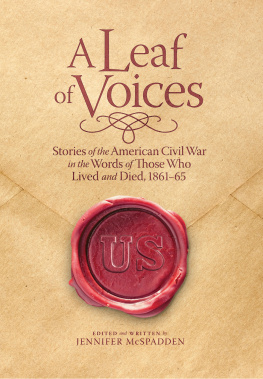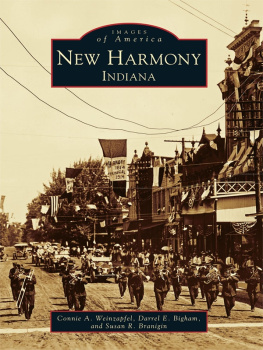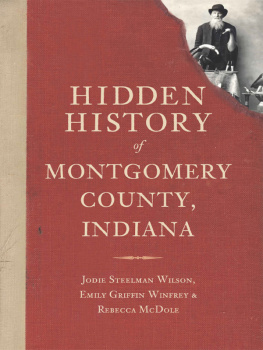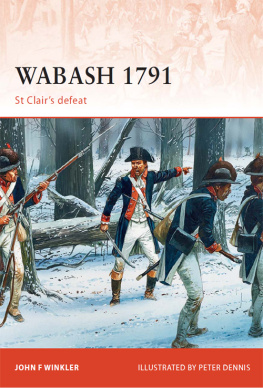AFTERWORD
Some note should be taken of conclusions we reached after completing this project of Civil War soldiers from Wabash College. What did we find as we looked over all five hundred plus of these biographies? There are several answers to that question.
First of all, although it cannot be proven definitively, it is likely that Wabash College sent more students to the war, proportional to its size, than did any other college in America. This possibility is reinforced by the record number of enlistments from the state of Indiana, either as volunteers or draftees. Estimates suggest that 74 percent of eligible military-age Hoosiers participated in the war for shorter or longer terms, and of these, 57 percent signed up for three years. This meant that Indiana produced the second-highest number of soldiers in the nation proportional to its population. Nearly 200,000 young men enlisted in Indiana, of whom about 7,243 died of battlefield wounds and another 17,785 of disease, indicating that about 12 percent never returned home. The loss of life among the former Wabash students is consistent with this percentage.
Many of these young men came from the area in and around Crawfordsville. Of the 436 young men who came to Wabash from Indiana, 112 resided in Crawfordsville at the time of their admission. Many others moved to Crawfordsville intending to go to the college. There were many Hoosiers; 435 veterans hailed from Indiana between 1833 and 1876, with Illinois a distant second at 31. Alphabetically, our veterans came from California (1), Iowa (7), Kentucky (8), Louisiana (1), Michigan (5), Minnesota (3), Mississippi (1), New Hampshire (1), New Jersey (1), New York (5), Ohio (9), Tennessee (1), and Wisconsin (1). In addition, a handful came from abroad: Scotland (2) and Syria (1).
It might have been thought that most of the Wabash students who entered military service were in their late teens or early twenties, having been born in late 1830 or 1840, yet sixteen of the veterans were born between 1811 and 1819, making them in their forties when they served. Several of these older soldiers joined in July 1863 when John Hunt Morgan and his Confederate cavalry threatened southern Indiana. As forty-year-olds, they ran little risk, since they often served for only about one week. Most of the soldiers as a whole enlisted as privates or sergeants, and a few rose to become captains or colonels; two of them became either a brigadier or a major general.
The huge totals leaving for camp and field did affect the college. As the war started, a fairly large number of students went downtown and enrolled in Crawfordsville, causing the college to worry whether there would be enough students to hold classes if the call for soldiers grew louder and more insistent. From the autumn of 1860 to the late spring of 1865, 101 students joined the army, and many started college during the war, stayed for a while, and then enlisted, while parents often urged their sons to postpone serving until they were older or were needed less on the family farm. Our total was swelled by students who were formerly at the college or who came after the war.
Since the college was founded to encourage young men to be ministers or teachers in Indiana and the Midwest, is not surprising to find 35 clergymen and 13 educators among about 400 whose jobs we could identify. At least 82 went into some form of business, 74 into law, 78 into farming, and 50 into medicine. The number of medical doctors is notable, because at that time the college emphasized classical languages and literature and offered a minimum of science courses. Other occupations included 14 artisans and craftsmen, 11 clerical staff, 7 professional soldiers, 23 government employees, 2 painters, 12 printers and journalists, 5 United States congressmen, and 14 state legislators.
Looking at deaths by decade, 84 died during the 1860s and 62 directly from military service. As is the case for all military casualties, many succumbed from disease or accidents rather than from battle casualties. During the four war years, 1861 to 1865, they lost their lives in Alabama (5), Georgia (8), Kentucky (5), Illinois (5), Indiana (12), Ohio (1), Maryland (1), Mississippi (6), Pennsylvania (1), South Carolina (1), Tennessee (1), Texas (2), and Virginia (10), and in unknown places, 4. Those who died in Indiana succumbed from their wounds or disease after returning home, hoping to recover. A surprising amount of deaths in years after the conflict can be attributed to debilitation during the war.
Those who erected the memorial tablets on Center Hall probably assumed, as we did, that all of the Wabash men were Union sympathizers. However, nine students volunteered for Confederate military service, and of these, the Lowry brothers, Samuel and William, were sons of an early Wabash trustee and fought on opposite sides of the conflict. Most of the nine were born in the South and enlisted after they left the college, so during the war itself no student left the campus to join the Confederate military service.
Finally, the soldiers own views and general dedication came out of a culture that was both widespread in the United States of the 1860s, close enough to the time of the Revolutionary War to still inspire the generation seventy years later, and refined by Wabash College itself.
Officially, the college did its best to encourage patriotism among its students and alumni: According to an arrangement of the Faculty, a military company has been formed; and all (unless excused by Faculty), are compelled to drill twice a week. Individual faculty members also encouraged students to become soldiers. Writing to a recent recruit, Professor Caleb Mills, however, expressed ambivalent feelings:
Since you left, the condition of our beloved country has assumed such an aspect as to make it the duty of many of her sons to respond to the call of arms. I honor the young man who is willing to drop his books and answer her demand. If one leaves the plow, another his tools and another the counter, counting house or office and goes to the camp and battlefield, I see no reason why the student of sufficient years and strength should not say to his books, lie there until I have served my country and then I will resume my communion with you. I am glad to learn that you have volunteered though I would take as much pleasure in teaching you as anyone ever under my instruction .
It is true that as the war dragged on into July 1863, the mood of the students became more subdued, as Wabash Magazine noted:
Wabash has suffered deeply in this war. The sad list is increasing of her departed heroes. As they leave the world, and us and as we think of those still in the field, the touching refrain comes to us again and againbrave boys are theygone at their countrys call; and yet, and yet, we cannot forget, that many brave boys must fall.
Wabash did not forget its own. A formal dedication of a large plaque June 17, 1902, called the Roll of Honor, saw many Civil War vets returning to their college.The spirit of the dedication can be found in these lines from an editorial on The Sons of Wabash written for the Indianapolis News by Dr. Louis Howland:
It is well that this roll of honor should be spread before the world. A college is great not in what it has in wealth and endowment and equipment, but in its memories, and in those unobtrusive influences which guide and mold lives. So Wabash College may become rich and powerful, but it can have nothing that it will prize more highly than the record of the deeds of its sons that was dedicated today. It is good to know...that men who have had special advantages are eager to use them for the general good, and ready to recognize the binding force of the Scriptural injunction, Unto whomsoever much is given, of him much shall be required.
The Roll of Honor on the outside wall of Center Hall is still on the tour of families considering the college. Another plaque, the frontispiece of this book, was dedicated in 1913. So through the years the college has paid tribute.
Next page
